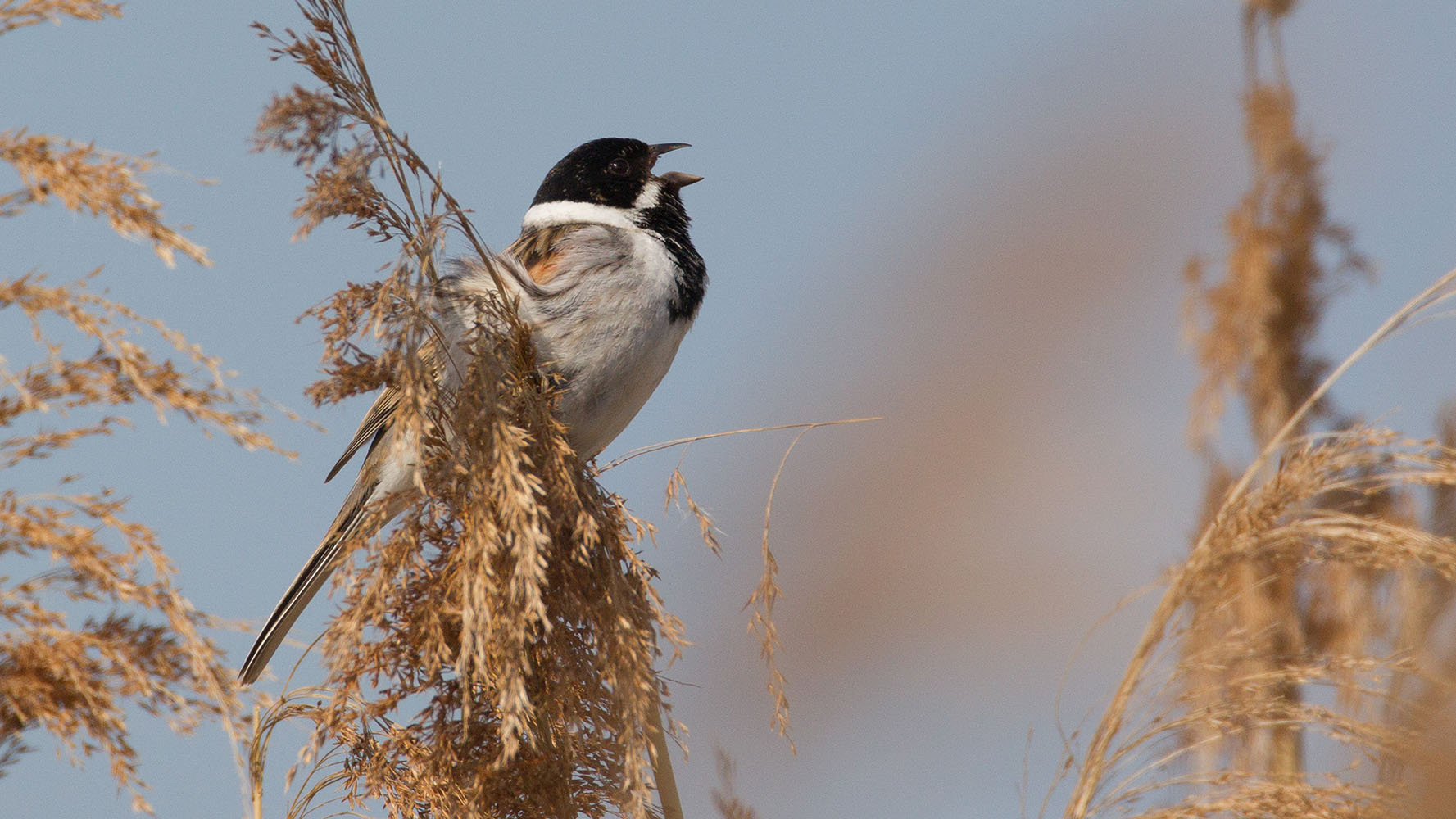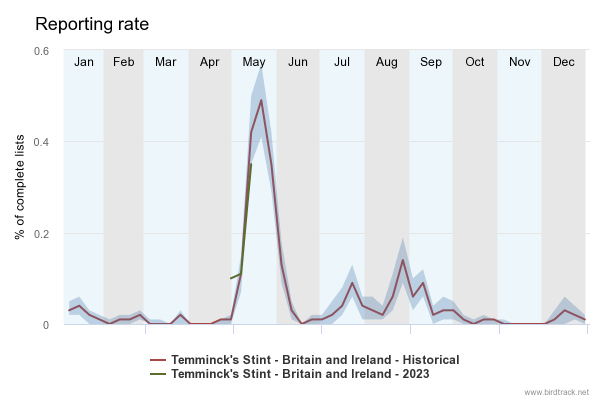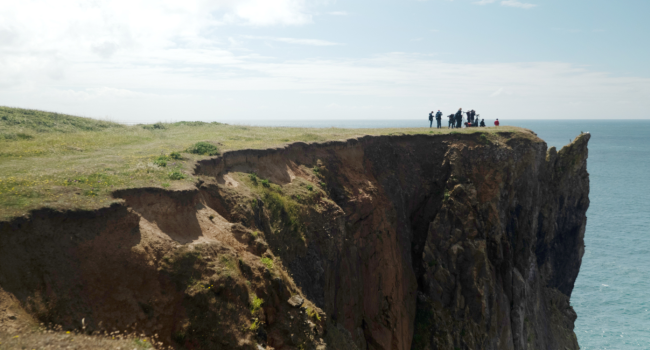
BirdTrack migration blog (19–25 May)
Be the first to commentWith each passing week, the pace of spring migration slows, as the majority of summer migrants that breed across Britain and Ireland has already arrived and are now either incubating eggs or raising chicks. Both Spotted Flycatchers and Nightjars start arriving in mid to late May, and in the last week reports of both species have increased as newly arrived birds have started to lay claim to territories ahead of their breeding season.
Spotted Flycatchers can be found in a mix of habitats, from mature broadleaf woodlands to well-vegetated gardens, and their habit of catching insects from exposed branches can result in prolonged views once you find one. Nightjars are much more secretive and, as their name suggests, only come out at night in search of insects. Evenings are the best time to listen for their churring call at their preferred habitat of heathland and new-growth conifer woodlands. Their cryptic plumage keeps them hidden during the day as they sit motionless on the ground or on a branch.
The past week has been a good one for Temminck’s Stint, the smallest wader found in Europe, with singles and small groups reported from many sites. Each spring, varying numbers of this scarce migrant pass through Britain and Ireland having spent the winter months in the Middle East, as they head north towards Fennoscandia where they will breed. The best places to look for them are along freshwater margins as they creep along in search of food, they will sometimes mix with Dunlins or Little Stints.

Other waders on the move during the last week included Sanderling, Turnstone and Grey Plover all of which will be heading towards the Arctic Circle, where the longer days enable them to search for food almost 24 hours a day. All three species moult into a brighter plumage for the summer and can look quite different compared to their plainer-looking winter plumage.
Ringed Plover is a common and widespread wader, and many of those breeding in Britain and Ireland will already be on eggs or have the first hatched young. However, over the last week individuals of the tundrae race that breed in Russia have been migrating through the country. This race is slightly smaller and darker than the hiaticula birds of the British and Irish race, but these differences are only really noticeable when the two are seen together.
In terms of rare and scarcer species, the highlights over the last seven days included a Squacco Heron in East Sussex, Eastern Subalpine Warblers in Shetland and Devon, and a Western Subalpine Warbler also in Shetland.
Looking ahead
The weather forecast for the coming week looks to be almost a repeat of the last week, with high pressure centred in the Atlantic resulting in settled conditions but a colder north to north-west breeze for many parts. Whilst this is not the ideal direction, the wind speeds look set to be light enough not to hinder migration too much.
The volume of species on the move will also be less due to the time of year but that doesn’t mean migration will have stopped altogether. Later arriving migrants such as Turtle Dove, Spotted Flycatcher, Swift, and Nightjar will continue to arrive over the course of the week.

Although the peak of spring wader migration is over, some species will continue to pass through and any groups of Dunlin are worth searching for the occasional Curlew Sandpiper, which will be in their red breeding plumage, and Little Stint.
Red-necked Phalarope is a rare breeding species preferring small lochs in the Northern Isles, and late spring is when these birds start to arrive. They can turn up in a variety of freshwater habitats including larger reservoirs, where their spinning feeding habit is helpful in identifying them at longer range.
Seawatches at this time of year can still be productive but may require some patience, with Fulmar, Manx Shearwater, Arctic Skua, and maybe even Long-tailed Skua being possible. Any groups of terns are worth scrutinising for Roseate Tern, a scarce breeder in both Britain and Ireland. Their whiter plumage, long tail and almost entirely black bill help separate them from both Arctic and Common Terns.
Now is a good time of year to look out for scarcer breeding species such as Bittern, Quail and Marsh Warbler. As always, the welfare of the bird should come first when thinking about sharing the news of finding such a species. The Rare Breeding Bird Panel’s latest blog has more information on which species to look out for and how you should submit your records.

Send us your records with BirdTrack
Submitting your sightings to BirdTrack is quick and easy, and gives us up-to-date information about our migrating birds.
Every record, from Blackbird to Black-tailed Godwit, is valuable.
Find out more







Share this page